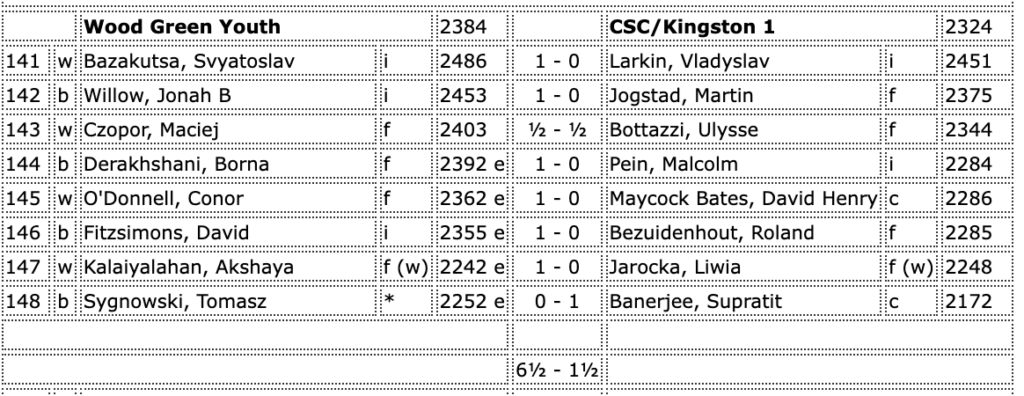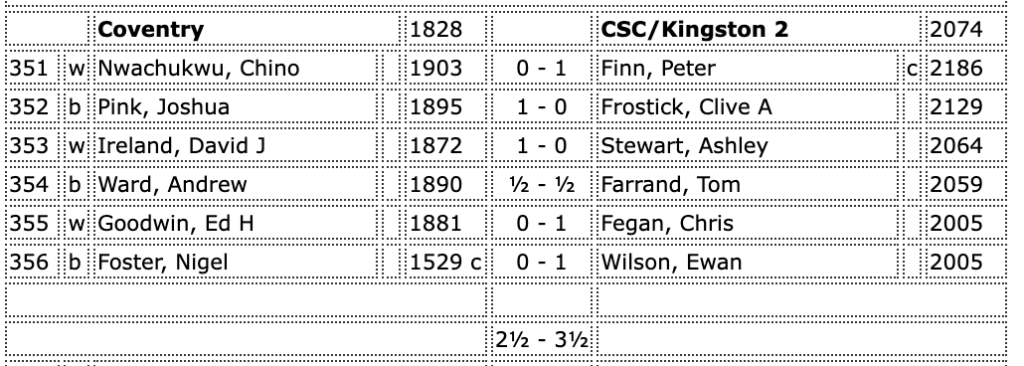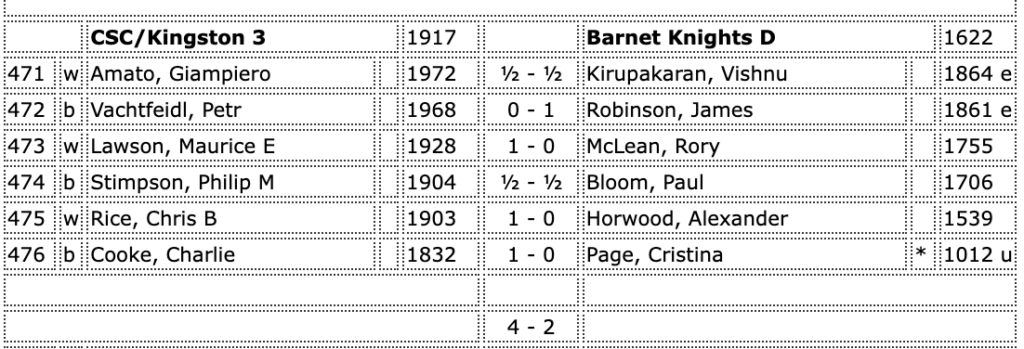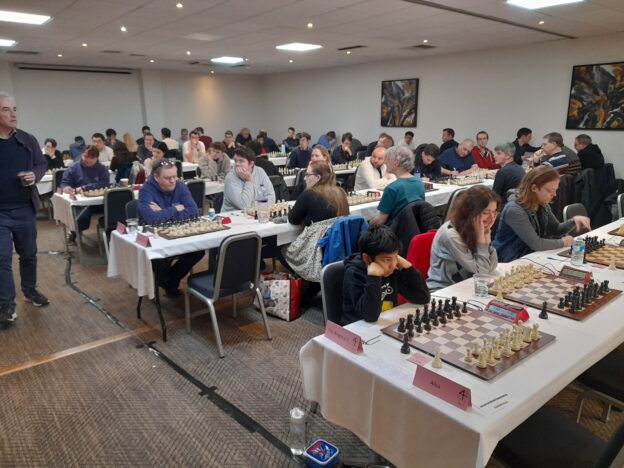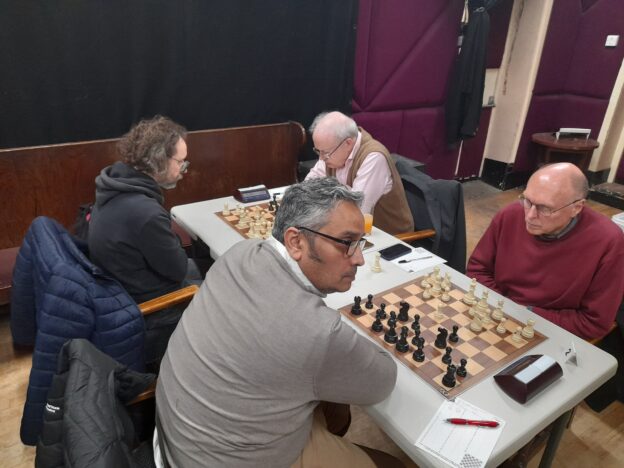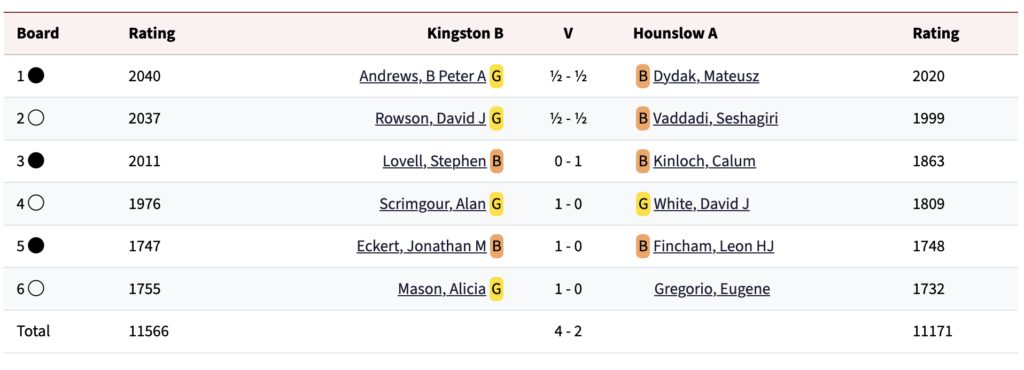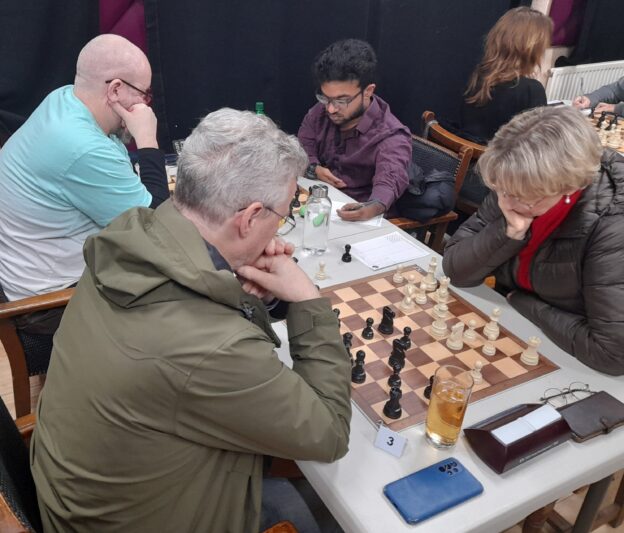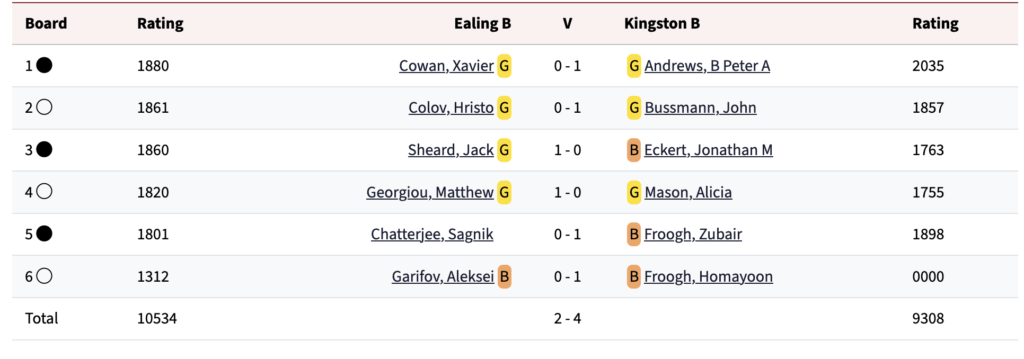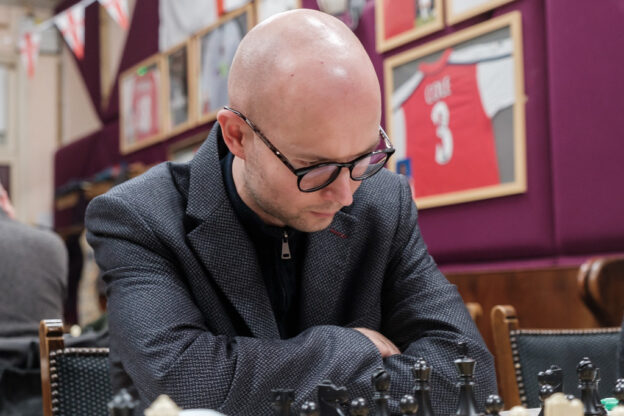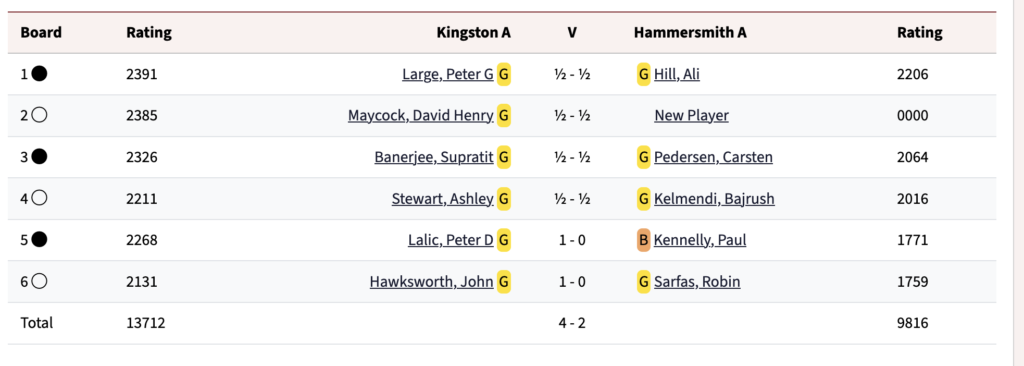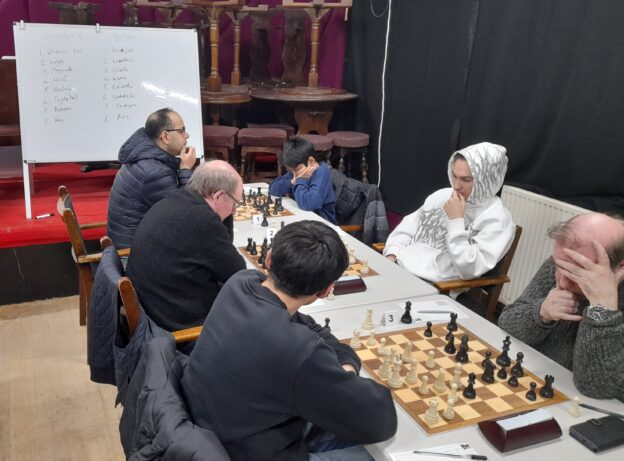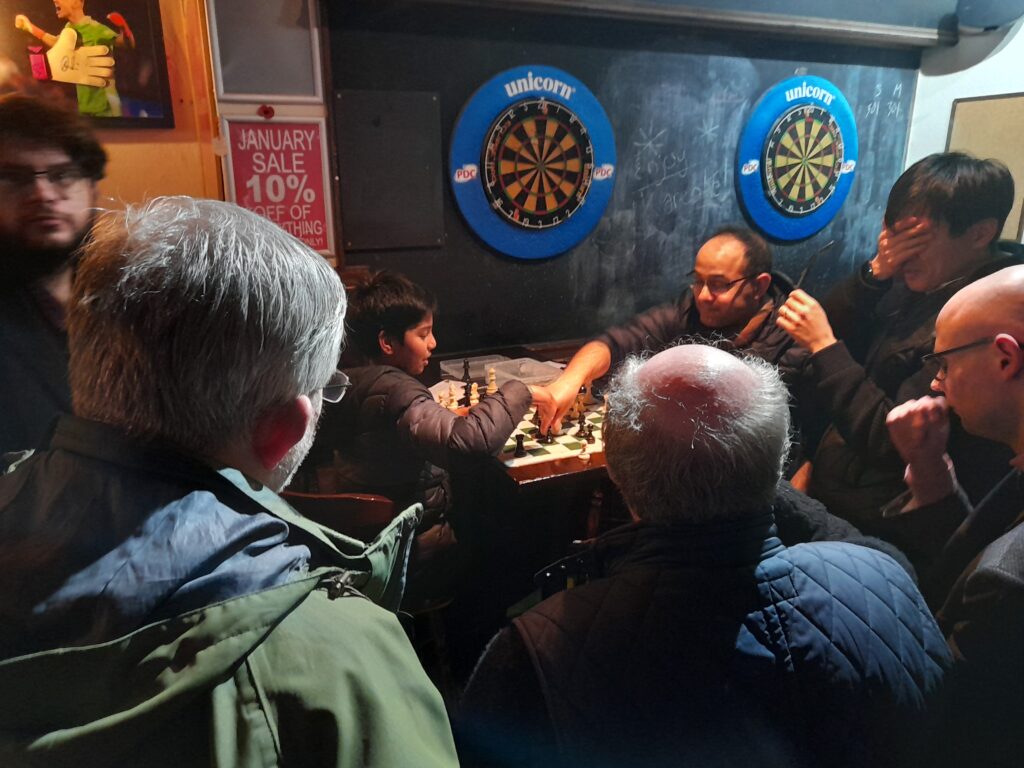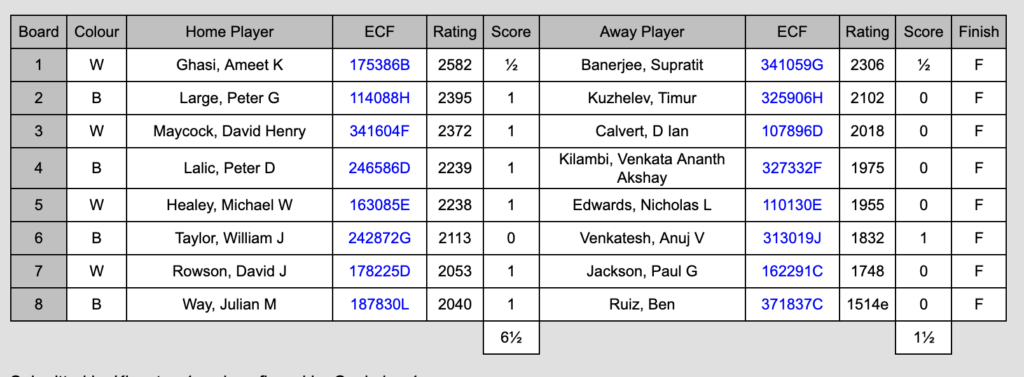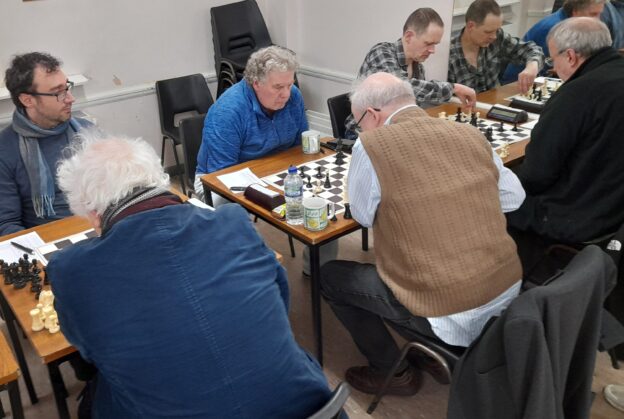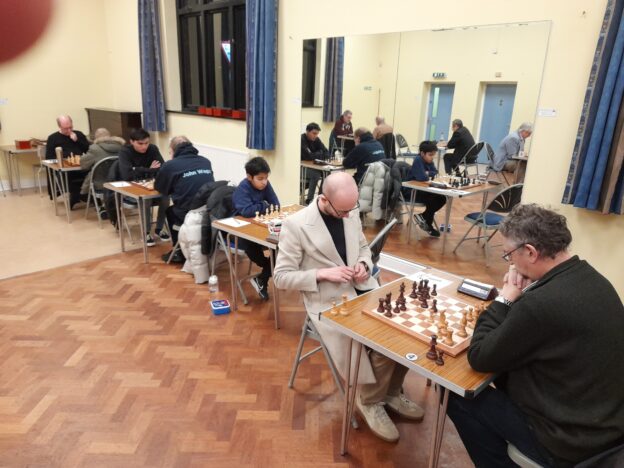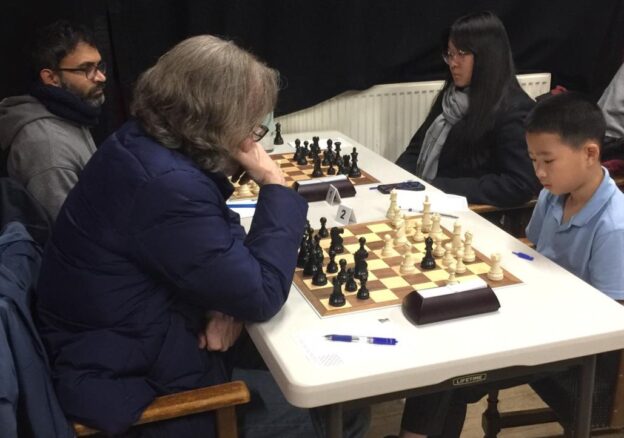CSC/Kingston 1 beat Scottish flagbearers Alba to get on the scoreboard in the first division and raise hopes that we might after all survive in this shark pool
Well, we will not be whitewashed. After a tough opening weekend when we lost both matches in the very testing 4NCL division 1, we finally got on the scoreboard on the second weekend in Peterborough. We were beaten 6.5-1.5 by Guildford Youth on the Saturday, but on Sunday we defeated the Scottish side Alba 5-2. We were helped by a weather-induced default, but even without that we would have won the match.
French FM Ulysse Bottazzi made an excellent debut for CSC/Kingston against Wood Green Youth, drawing with the very strong Polish-born FM (surely soon to be IM) Maciej Czopor, winner of the 2024 Kingston Invitational. The prodigious Supratit Banerjee went one better even than that, beating Polish player Tomasz Sygnowski on board 8. Supratit’s game was highly tactical, and it hinged on the position shown below. Sygnowski playing Black is actually on top at this point, but goes wrong in an exchange of pieces and Supratit emerges with a winning advantage.
We had three winners against Alba on Sunday – David Maycock, Roland Bezuidenhout and Supratit again, though this time by default (an Alba player had failed to get down to Peterborough because of a storm on Saturday which disrupted rail links). David’s game against Declan Shafi was brief and brutal, courtesy of two killer bishops.
Roland enjoyed a tremendous win with Black against IM and eight-times Scottish champion Roddy McKay. After positional skirmishing, it suddenly becomes very tactical and White’s position collapses.
CSC/Kingston 2 had a terrific weekend in division 3 (Knights), winning both their matches to put themselves into early promotion contention. On board 1, Peter Finn again won both his games to make him 4/4 so far this season. CSC/Kingston 2 dispatched a strong North West Eagles team with surprising ease on Saturday, but had more difficulty on Sunday, narrowly defeating a Coventry side who on paper were a good deal weaker than their opponents the previous day.
CSC/Kingston 3 had a familiar weekend in division 4, which is a Swiss tournament whereas divisions 1, 2 and 3 (divided into Knights and Bishops) are 12-team all-play-alls. CSC/Kingston 3 won against heavily outrated Barnet Knights D on Saturday, but that propelled them up the table and into a tough match with Iceni 2 on Sunday. CSC/Kingston and Iceni had identical average ratings of 1903, but in a well-contested encounter Iceni squeezed out a win by 3.5-2.5 to leave CSC/Kingston 3 in joint 14th place in the 32-team division.
The next 4NCL weekend is on 15/16 February, with the first and second teams playing in Coventry and the third team back in action in Peterborough.
Stephen Moss, Kingston club captain
